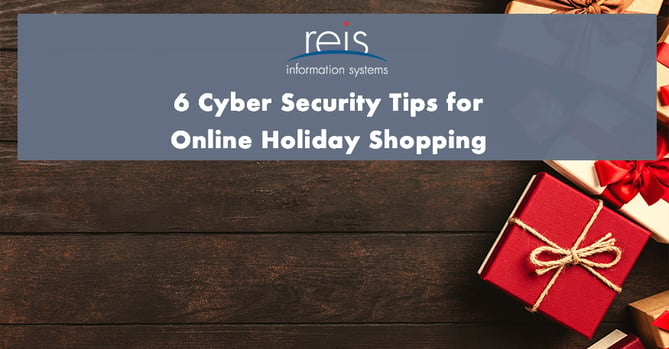Christmas is almost here and if you're finished shopping or still have some (or all) of your shopping to do we wanted to share some tips. Keep reading to learn these quick tips.

If you're like me, you didn't realize how fast Christmas has come and are trying to get gifts fast - online being one of the ways to shop.
You probably do some shopping at physical stores, but sometimes going online can be easier and time can be saved. When having trouble finding the right gifts in local store locations, many people turn to find success with online stores. One of the reasons that people choose to search online is when items are out of stock in stores, but could be available online from the company, other resellers, or companies/individuals in another province or country.
For the most part, shopping online is safe - at least when you use familiar, reputable websites. Once someone strays from the usual companies they purchase from, there needs to precautions took to make sure that when a credit card is entered, it's not given to scammers.
Below are 6 tips to make sure that your online shopping during the holidays is safe.
1. Make sure that the website is secure
The most important thing to do when you enter credit cards when online is to make sure that the data is secure. This means that instead of sending the card number, it's encrypted - so no one watching the network traffic can intercept it.
There's an easy way to see this in web browsers - they each have a way to show that you are on a secure HTTPS connection. In general, web browsers show a padlock icon.
Sometimes you can see a stronger level called Extended Validation SSL. Web browsers indicate this by displaying the name of the domain, the full company name, and the font is green.
Make sure that when you enter information (ex, credit card, bank information) you see the padlock and/or the green font with the company's name. You should also try to look for a website that lets you pay with PayPal since the login page for PayPal should indicate that it's secure.
2. Use secure passwords
Many websites that sell things require you to create an account when you first purchase something. When you make an account you enter your name, address, phone number, and payment info. Then you set up a password. When you create a password, make sure that each website/account has a secure and unique password.
Don't use passwords that you use for other websites. This is important to note because if someone gets that password, they could try to use it on other websites. So, if these websites have stored your credit card, the thief can make purchases with your money.
If you are an Apple user, a good way to do this is to let Safari recommend a password. Then Safari stores the password in a secure keychain, making it available to you later on all Apple devices that are signed into the same iCloud account.
3. Don't shop on public Wi-Fi networks
It might save you time to do some shopping while you are at an airport, cafe, or any location that has free public Wi-Fi. This isn't a good idea.
Unless you have a VPN, which encrypts all data from your computer or mobile device, people can search the network and will grab data for usernames, passwords, credit cards, etc.
4. Use PayPal
If you go on a website that is unfamiliar and purchase something, you might want to think again about giving them your credit card number. The site could be malicious, not have good security, and/or compromise your information later.
There are many websites that let you pay using PayPal. If you have an account, you can pay with your balance, but if not, you can route your credit card payment through PayPal - which offers more security. PayPal doesn't send the credit card number to the website; they confirm that payment was made through them. Make sure that if you do pay with PayPal, make sure that is really is PayPal - you can tell this by the name in green and/or the padlock icon.
5. Don't buy from websites you haven't heard of
In many cases, small companies run their business on the web. But scammers could set up websites to attract people that are looking for unavailable items. If you're tempted to buy from a website you haven't heard of, search the name of the company in a browser and see if anyone has talked about the company and if they have given them payment.
Lots of businesses also sell on Amazon or eBay. These are good choices to pursue if you can't find items on usual sites you visit. The sales policies on these 2 sites are there to protect the end customer.
6. Check prices in a different browser
Some sellers display different prices for people who are logged into the website and those who aren't logged in. They might display lower prices for new prospects to try to draw them into buying something.
If you're looking at purchasing an item that is on the more expensive side, check the same page in a different browser that you're not logged into. If you do find a different price, add the item to your cart and then log in - the price of the lower item should stay when you log in.
We hope that you enjoy the holiday season and that you can use these tips to stay safe online.
Sources:
McElhearn, Kirk. (2014). 6 Cyber Security Tips for Holiday Shopping Online. Retrieved December 17, 2019 from, https://www.intego.com/mac-security-blog/6-cyber-security-tips-for-holiday-shopping-online/



.png?width=1080&name=GOOGLE%20REVIEW%20(1).png)